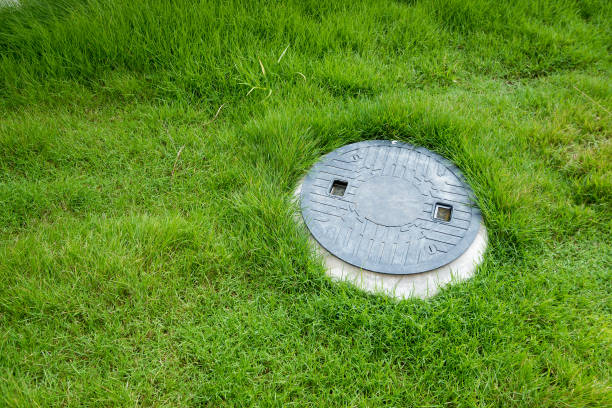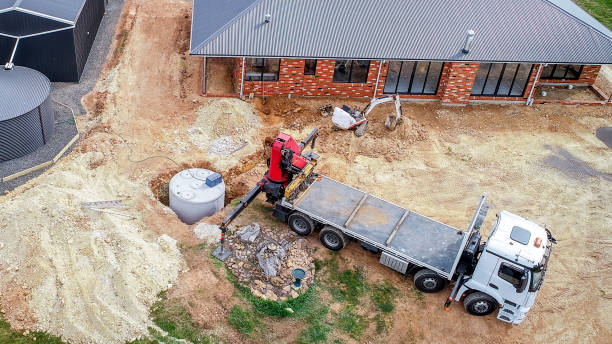
How to Tell if Septic Tank is Full: 5 Signs Every Homeowner Should Know
- Regular inspections are essential: Even without obvious problems, septic tanks should be checked every 1–5 years depending on size and household usage.
- Watch for slow drains and gurgling sounds: These are early signs that the tank may be nearing capacity.
- Foul odors and unusual lawn conditions indicate trouble: Persistent sewage smells or soggy, green patches over the drain field can signal a full tank.
- Sewage backups require immediate action: Overflowing toilets, wastewater in sinks, or unusual bubbling noises demand professional attention.
- DIY monitoring can help detect problems early: Homeowners can check for odors, slow drainage, and standing water, but professional inspection is recommended for confirmation.
- Preventative care extends system life: Reduce water usage, dispose of waste properly, avoid heavy vehicles on the drain field, and schedule regular pumping.
- Ignoring warning signs can be costly: Delaying action can lead to property damage, health hazards, and expensive repairs.
Owning a home with a septic system comes with its unique responsibilities. Unlike municipal sewage systems, your septic tank requires regular attention and maintenance to function properly. Ignoring it can lead to costly repairs, unpleasant odors, and even damage to your property. But how do you know when your septic tank is full? This guide will walk you through the key signs, preventative measures, and tips every homeowner should know.
What Is a Septic Tank and How Does It Work?
Before exploring the signs of a full septic tank, you may be asking yourself: how does a septic tank work? Essentially, it is an underground container that collects wastewater from your home. Solids settle at the bottom as sludge while liquids flow into a drain field. Naturally occurring bacteria break down some of the solids over time, but eventually, the tank will reach capacity.
Septic tanks generally need to be pumped every 3–5 years, depending on the size of the tank and your household’s water usage. Neglecting routine maintenance can lead to backups, foul odors, and costly repairs.
How Often Should You Inspect Your Septic Tank?
Even if your septic tank doesn’t show immediate signs of being full, routine inspections are essential. Here’s a quick guide on inspection frequency:
- Every 1-2 years: Check the sludge and scum levels if your tank is smaller than 1,000 gallons.
- Every 3 years: For average-sized homes (2,000 gallons) with 3-4 occupants.
- Every 5 years: Pumping may be needed depending on tank size, household size, and water usage.
Regular inspections prevent sudden issues and extend the life of your septic system.
Common Warning Signs: How to Tell if Septic Tank is Full
Recognizing the early signs of a full septic tank can save you from messy backups. Here are the most common indicators:
1. Slow Drains and Gurgling Sounds
If sinks, toilets, or bathtubs start draining slowly, it could indicate that your septic tank is nearing capacity. Pay attention to gurgling sounds when water is draining—this often happens when air is trapped in the pipes due to a clogged or full tank.
- Slow drains in multiple areas of the home
- Gurgling noises in toilets or sinks
- Water backing up into sinks, showers, or tubs
2. Foul Odors Around the Property
A septic tank produces natural odors, but strong, unpleasant smells around your home or yard are a red flag. These odors can occur both inside and outside the home, particularly near the septic tank or drain field.
- Sewage-like smells in the yard or near plumbing fixtures
- Musty or rotten odors inside the home
- Persistent smells even after cleaning drains
3. Pooling Water or Muddy Areas

Water pooling above the drain field or soggy patches in your yard can indicate that your septic tank is full or your drain field is failing. Normally, wastewater is absorbed into the soil, so standing water is a serious warning.
- Wet or marshy areas above the septic system
- Patches of unusually green grass
- Water bubbling up from the tank or drain field
4. Sewage Backup in the Home
A full septic tank can cause wastewater to back up into your home’s plumbing system. This is an urgent sign that immediate action is required.
- Toilets overflowing with sewage
- Wastewater in sinks or basement drains
- Unusual gurgling or bubbling noises
5. High Nitrate Levels in Well Water
If your home uses a private well, high nitrate levels could indicate septic system issues. This happens when a full or malfunctioning septic tank contaminates groundwater.
- Test water for nitrates and coliform bacteria
- Sudden changes in water taste or odor
- Consult a professional if contamination is suspected
How to Tell if Septic Tank is Full Without Opening It
You don’t always have to inspect your septic tank directly to know it’s full. Several indirect methods can help:
- Water usage patterns: Sudden slow drainage or backups may indicate a full tank.
- Inspection ports: Some systems have access points where you can check sludge levels.
- Professional inspection tools: Septic service companies use cameras or tank probes to measure capacity without disturbing the tank.
DIY Checks: What Homeowners Can Do
While professional inspections are recommended, there are a few steps homeowners can take to monitor their septic tank:
- Check for odors: Walk around the yard and near plumbing vents for unusual smells.
- Monitor water flow: Watch for slower drainage or gurgling noises.
- Look at the lawn: Green, wet, or soggy areas over the drain field may indicate problems.
- Listen to the system: Unusual sounds in pipes can be an early indicator.
When to Call a Professional

Knowing when to call a professional is crucial. Attempting to fix a full septic tank yourself can be dangerous and ineffective. You should contact a septic service company if:
- You notice sewage backup in the home
- There is persistent foul odor near the septic system
- Water pooling is present around the drain field
- DIY checks confirm sludge or scum levels are high
Professional pumping, inspection, and repair are often required to ensure your system continues working properly.
Preventing Your Septic Tank from Filling Too Quickly
While some factors, like household size, are unavoidable, there are steps you can take to slow down the filling process:
- Reduce water usage: Fix leaks and install water-efficient appliances.
- Proper waste disposal: Avoid flushing non-biodegradable items like wipes, diapers, or chemicals.
- Regular pumping: Schedule professional pumping every 3-5 years.
- Drain field care: Keep heavy vehicles off the drain field and plant grass instead of trees nearby.
Frequently Asked Questions
How long does it take for a septic tank to fill?
The time depends on tank size, household size, and water usage. Most tanks need pumping every 3-5 years.
Can I pump my septic tank myself?
DIY pumping is not recommended due to the risk of exposure to toxic gases and improper disposal. Always hire a licensed professional.
What happens if a septic tank overflows?
Overflow can lead to sewage backup in your home, contaminated groundwater, foul odors, and costly repairs to the tank or drain field.
How can I extend the life of my septic system?
Regular pumping, water conservation, proper waste disposal, and professional inspections are key strategies for maintaining a healthy system.
Signs That Require Immediate Action
Not all signs of a full septic tank are emergencies, but some demand immediate attention:
- Toilet backups
- Flooding over the drain field
- Sewage odors inside the home
- Standing water with unusual odor near the tank
Ignoring these signs can escalate problems quickly, leading to expensive repairs and health hazards.
Final Thoughts
Knowing how to tell if septic tank is full is crucial for every homeowner with a septic system. Paying attention to slow drains, foul odors, pooling water, and sewage backups can save you from costly and unpleasant issues. Regular inspections, proper maintenance, and professional pumping are essential to keep your septic system running smoothly. By staying vigilant and acting promptly, you can protect your home, your yard, and your family from the risks of a full or failing septic tank.

